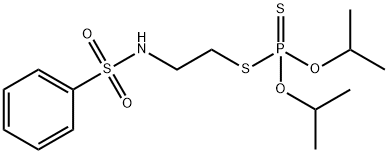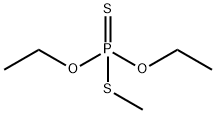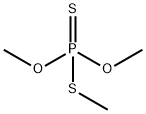BENSULIDE
- CAS NO.:741-58-2
- Empirical Formula: C14H24NO4PS3
- Molecular Weight: 397.51
- MDL number: MFCD00055362
- EINECS: 212-010-4
- SAFETY DATA SHEET (SDS)
- Update Date: 2024-12-18 13:37:16

What is BENSULIDE?
Chemical properties
Colorless liquid; slight odor.Insoluble in water; soluble in kerosene and xylene.
Chemical properties
Bensulide is and amber, viscous liquid, or forms colorless or white crystalline solid below 34.4 C. Combustible. Commercial product is available as an emulsifiable concentrate.
The Uses of BENSULIDE
Bensulide is an herbicide used for preemergent control of annual grasses and broadleaf weeds in agricultural crops (60–65% of all use). Current registered use sites are carrots, fruiting vegetables, leafy vegetables (mostly head lettuce), dry bulb vegetables (onions), cucurbits (mostly melons), and cole crops (cauliflower, cabbage, broccoli, broccolini, and broccoflower). Bensulide can also be used on field-grown herbaceous plants and field-grownbulbs. Products containing bensulide are intended for outdoor homeowner use on lawns and ornamentals, and application by professional lawn care operators to lawns, ornamentals, parks, and recreation areas.
The Uses of BENSULIDE
Herbicide.
Definition
ChEBI: Bensulide is a member of benzenes.
Hazard
Highly toxic, cholinesterase inhibitor. Use may be restricted.
Agricultural Uses
Herbicide: A selective pre-emergence herbicide used to control bluegrass, crabgrass and other annual grasses and broadleaf weeds in agriculture crops, cotton and turf. It is widely used on golf courses and home lawns. Target weeds also include barnyardgrass, burning nettle and canarygrass. Not approved for use in EU countries.
Trade name
BENSUMEC®; BETAMEC®; BETASAN®; BETASAN®-E; BETASAN®-G; DISAN®; EXPORSAN®; KAYAPHENONE®; PREFAR®; PREFAR®-E; PRESAN ®; PROTURF®; R-4461®; SAP (herbicide)
Potential Exposure
A selective preemergence organophosphate herbicide used to control bluegrass, crabgrass and other annual grasses and broadleaf weed s in agriculture crops, cotton and turf. It is widely used on golf courses and home lawns. Target weeds also include barnyard grass, burning nettle, and canary grass.
Carcinogenicity
Bensulide was given in the diet
for 104 weeks to rats at levels to achieve doses of 0, 1, 15, or
60 mg/kg/day . No cholinergic signs were observed at
any dose. Increased absolute liver weights accompanied by
mild histopathological changes (hepatocyte vacuolation and
eosinophilic foci) occurred at 60 mg/kg/day, but there was no
evidence of carcinogenic potential.
Bensulide was given in the diet for 78 weeks to mice at
levels to achieve 0, 1, 50, or 200 mg/kg/day . Survival
rates, clinical observations, and hematological parameters
were unaffected at all doses. Decreased overall body weight
gains, increased absolute and relative liver weights accompanied
by histopathological changes (pale foci, cell atypia,
and cell foci) occurred at 200 mg/kg/day (males only).
Overall body weight gain was also reduced in males at
50 mg/kg/day, but there was no evidence of carcinogenic
potential.
Shipping
UN3018 Organophosphorus pesticides, liquid, toxic, Hazard Class: 6.1; Labels: 6.1—Poisonous materials. UN3077 Environmentally hazardous substances, solid, n.o.s., Hazard class: 9; Labels: 9—Miscellaneous hazardous material, Technical Name Required.
Incompatibilities
Incompatible with oxidizers; chlorates nitrates, peroxides. Decomposes slowly in light and strong UV. Corrosive to copper, aluminum, magnesium, zinc. Slowly hydrolyzes in water, releasing ammonia gas and forming acetate salts. In the presence of strong reducing agents such as hydrides, organophosphates form highly toxic and flammable phosphine gas. Contact with oxidizers can cause the release of toxic oxides of phosphorus. Stable @ 80 C for 50 hours; decomposes @ 200° C in 18 40 hours.
Waste Disposal
Destruction by alkali hydrolysis or incineration. Containers must be disposed of properly by following package label directions or by contacting your local or federal environmental control agency, or by contacting your regional EPA office.
Properties of BENSULIDE
| Melting point: | 34.4°C |
| Boiling point: | 487.2±55.0 °C(Predicted) |
| Density | 1.2240 |
| storage temp. | 2-8°C |
| solubility | Chloroform (Slightly) |
| pka | 10.21±0.40(Predicted) |
| form | Solid |
| color | White |
| Water Solubility | 25mg/L(room temperature) |
| BRN | 2164989 |
| Stability: | Moisture Sensitive |
| CAS DataBase Reference | 741-58-2 |
| EPA Substance Registry System | Bensulide (741-58-2) |
Safety information for BENSULIDE
| Signal word | Warning |
| Pictogram(s) |
 Exclamation Mark Irritant GHS07  Environment GHS09 |
| GHS Hazard Statements |
H302:Acute toxicity,oral H410:Hazardous to the aquatic environment, long-term hazard |
| Precautionary Statement Codes |
P273:Avoid release to the environment. |
Computed Descriptors for BENSULIDE
New Products
4-Fluorophenylacetic acid 4-Methylphenylacetic acid N-Boc-D-alaninol N-BOC-D/L-ALANINOL Tert-butyl bis(2-chloroethyl)carbamate 3-Morpholino-1-(4-nitrophenyl)-5,6-dihydropyridin- 2(1H)-one Furan-2,5-Dicarboxylic Acid Tropic acid S-2-CHLORO PROPIONIC ACID ETHYL ISOCYANOACETATE 2-Bromo-1,3-Bis(Dimethylamino)Trimethinium Hexafluorophosphate (6-METHYL-[1,3]DITHIOLO[4,5-b]QUINOXALIN-2-ONE INDAZOLE-3-CARBOXYLIC ACID 4-IODO BENZOIC ACID (2-Hydroxyphenyl)acetonitrile 4-Bromopyrazole 5,6-Dimethoxyindanone 2-(Cyanocyclohexyl)acetic acid 4-methoxy-3,5-dinitropyridine 2-aminopropyl benzoate hydrochloride 1-(4-(aminomethyl)benzyl)urea hydrochloride diethyl 2-(2-((tertbutoxycarbonyl)amino) ethyl)malonate tert-butyl 4- (ureidomethyl)benzylcarbamate Ethyl-2-chloro((4-methoxyphenyl)hydrazono)acetateRelated products of tetrahydrofuran







You may like
-
 Bensulide CAS 741-58-2View Details
Bensulide CAS 741-58-2View Details
741-58-2 -
 2033-24-1 98%View Details
2033-24-1 98%View Details
2033-24-1 -
 1975-50-4 98%View Details
1975-50-4 98%View Details
1975-50-4 -
 2-HYDROXY BENZYL ALCOHOL 98%View Details
2-HYDROXY BENZYL ALCOHOL 98%View Details
90-01-7 -
 2-Chloro-1,3-Bis(Dimethylamino)Trimethinium Hexafluorophosphate 221615-75-4 98%View Details
2-Chloro-1,3-Bis(Dimethylamino)Trimethinium Hexafluorophosphate 221615-75-4 98%View Details
221615-75-4 -
 61397-56-6 CIS BROMO BENZOATE 98%View Details
61397-56-6 CIS BROMO BENZOATE 98%View Details
61397-56-6 -
 14714-50-2 (2-Hydroxyphenyl)acetonitrile 98+View Details
14714-50-2 (2-Hydroxyphenyl)acetonitrile 98+View Details
14714-50-2 -
 118753-70-1 98+View Details
118753-70-1 98+View Details
118753-70-1